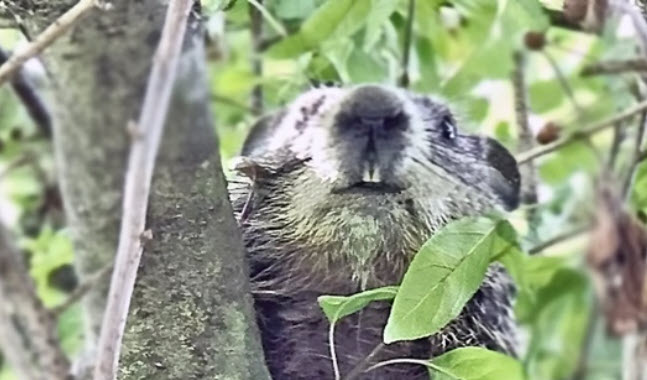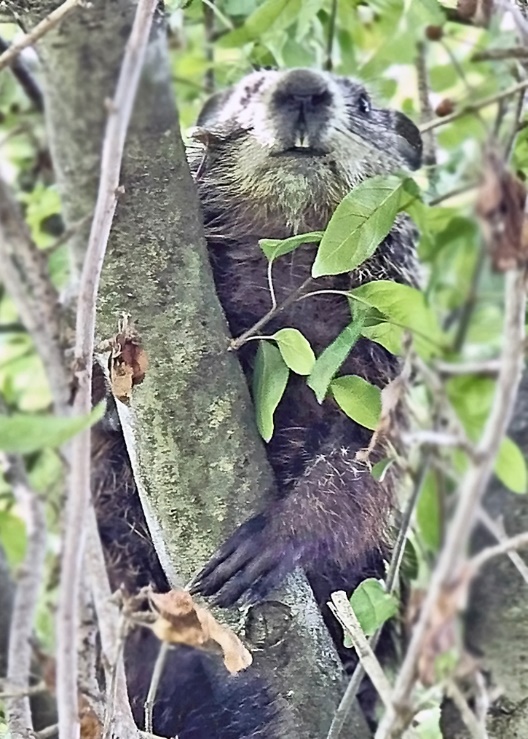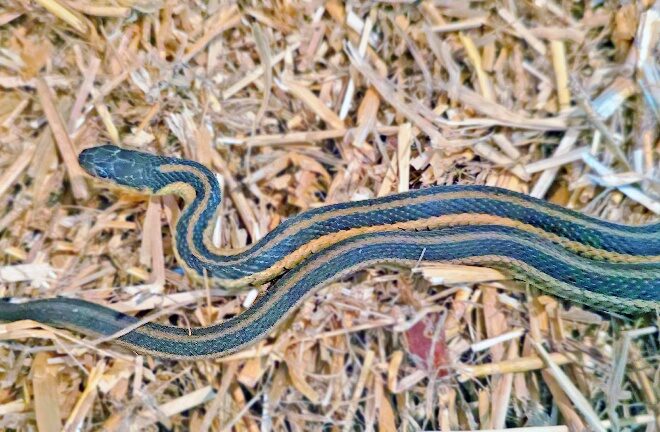
Rural Perspectives: Groundhogs stay busy after long winter naps
by Diane Constable

The groundhog (Marmota monax) is a burrowing rodent that is in the same family as tree and ground squirrels, chipmunks, and prarie dogs. It is also known as a “whistlepig” or a “woodchuck” (from it’s Algonquian name “wucack,” which means ”digger”).
The adult is 17 to 26 inches long, tip-to-tail, and weighs 5 to 14 pounds. They do not store winter food like others in the squirrel family; instead, during the summer, they pack in enough food to double their weight in preparation for winter hibernation, which lasts four to six months.
The male awakens in early February to search for a female and will mate in early March. They share a den until the three-to-six offspring are born. At this point the male leaves and may return once the babies are able to leave the den. In about two to three months, the pups (or “chuckings”) are on their own and will have an average lifespan of about three years.
Groundhogs live in fields and woodlots and mostly eat grasses, fruits, leaves, and problematically, agricultural and garden crops. They also munch on grasshoppers, slugs and other small creatures.
Although they interact and commuicate with each other using whistles and clucking sounds, they have personal living quarters. They make extensive underground dens that are below the frostline. These burrows can be up to 40 feet long and have multiple entrances and various rooms for sleeping, raising young, and going to the bathroom; they even have a peephole. The tunnels also offer shelter to other animals, and the act of tunnel digging helps aerate and mix the soil.
The dens and entry holes can cause problems if built too close to buildings (especially building foundations) or where farming equipent is used. Predators include mink, foxes, coyotes, eagles, and hawks.
Fun Facts:
- Groundhogs are smart, quick, agile, and good swimmers. They will often climb trees when threatened by larger predators such as dogs or coyotes.
- Groundhog Day was started in the 1700s in Punxsutawney, Pennsylvania, by a German immigrant who wanted to celebrate Candlemas Day (Feb. 2) as he had in Europe. In Germany, part of this celebration involved viewing a hedgehog shadow to determine if the day was clear enough to cast a shadow, which predicted a longer winter. In Punxsutawney, instead of a hedgehog, a groundhog was used, and a new American tradition was born.
 As an avid photographer, Diane Constable regularly puts her formal education in both nature and photography to good use. Diane also enjoys gardening and her dogs and serves on the board of the Ann Arbor Dog Training Club.
As an avid photographer, Diane Constable regularly puts her formal education in both nature and photography to good use. Diane also enjoys gardening and her dogs and serves on the board of the Ann Arbor Dog Training Club.



